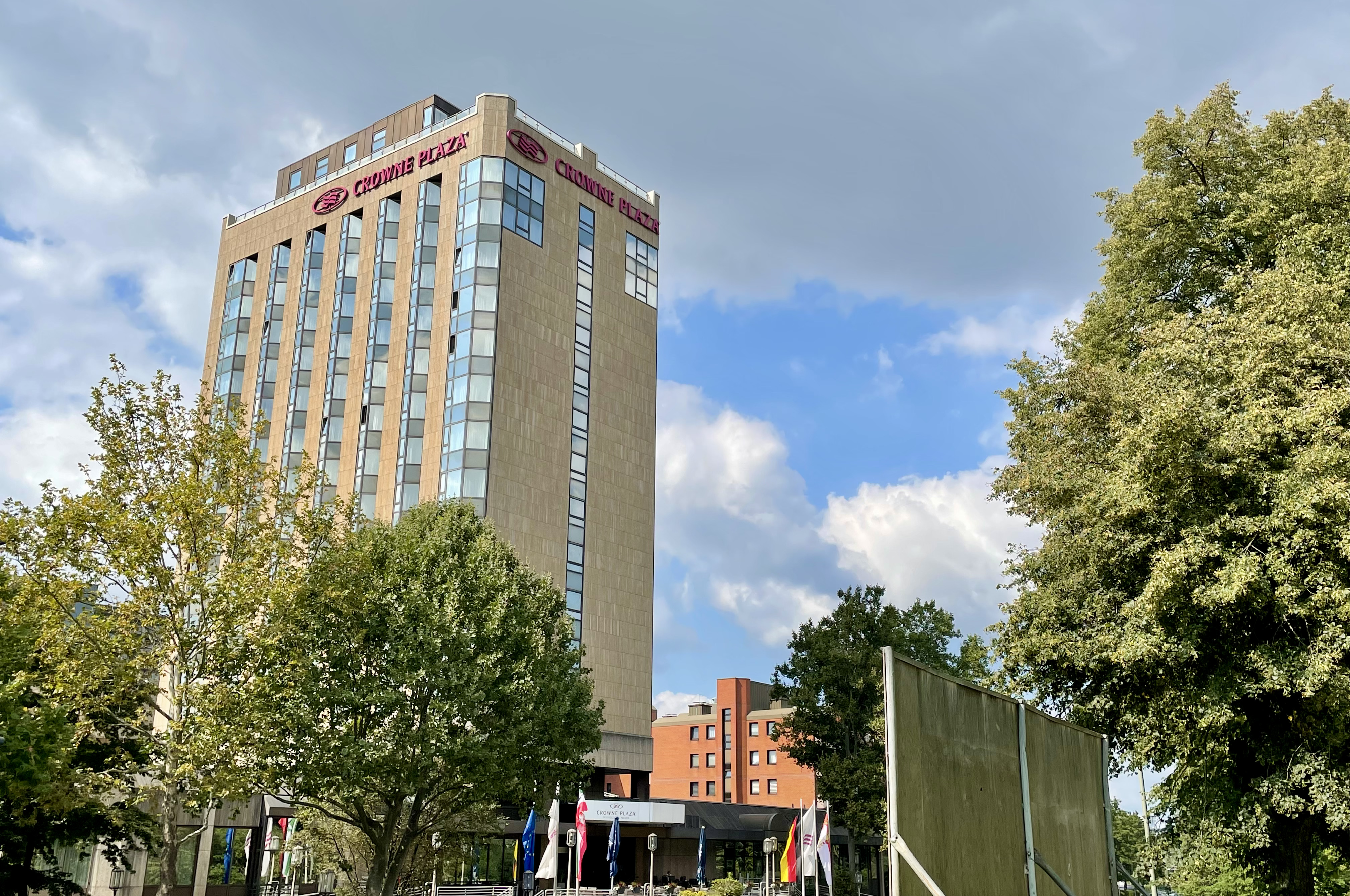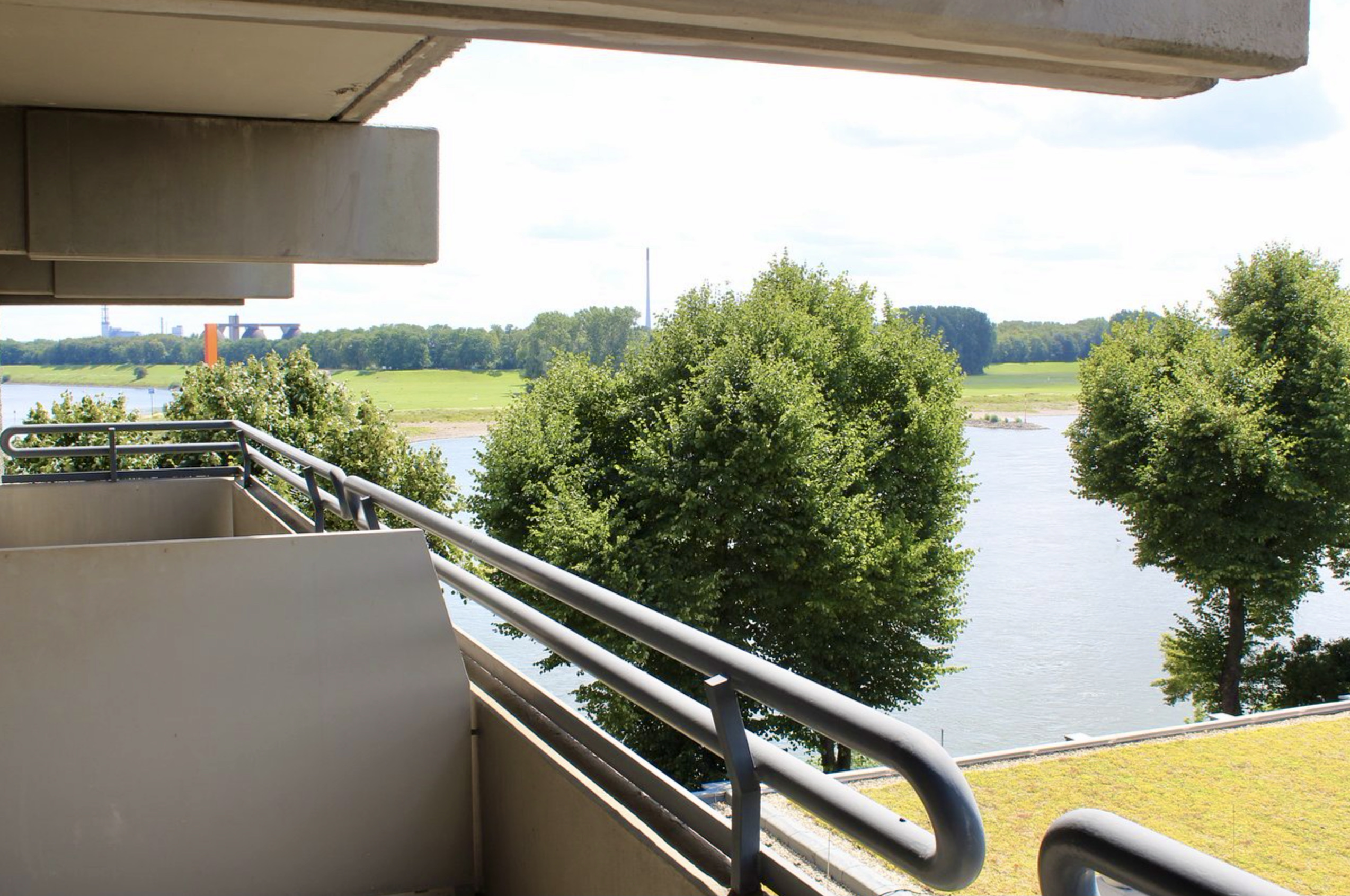

"The Hanseatic cities - then and now" is the credo of this 455-kilometer cross-border route. A fascinating bike tour which follows the footsteps of old German and Dutch merchants, full of history and modernity. Downstream along well-known rivers from the German city of Neuss to the Dutch city of Harderwijk through beautiful nature and varied landscapes. Experience the golden age of no less than sixteen historic trading cities in a row. Cycle through medieval streets and old quays, past the remains of the city wall... you will find out that time has never stopped.
| Day 1 | Arrival in Neuss (Düsseldorf) (D) | |
Arrival in Neuss. The hotel is located in a quiet spot a few kilometres outside the city centre on the banks of the Rhine. Tomorrow's cycle tour will take you through the heart of the Hanseatic city of Neuss anyway. If you are early, you can still explore Düsseldorf's old city centre and it's famous Königsallee from the hotel today. |
||
| Day 2 | Neuss (D) - Homberg (D) | 50 km |
You soon reach the centre of Neuss is a lively, former Hanseatic city on the Rhine with old warehouses, a sizeable inner harbour and historical sights. Especially worth a visit is the imposing Quirinus-Münster, which was awarded the honorary title of 'basilica minor' by Pope Benedict XVI on the occasion of its 800th anniversary. Next to this beautiful church is the market square with several cafés and restaurants. Just past the centre of Neuss, the Hanseatic Towns Cycle Route shows its best side: for here it runs along the North Canal. Tall trees line the cycle path, cool air rises from the canal and dozens of birds chirp in the branches. The diversions via Meerbusch is very entertaining, as it takes you through Millionärsland. Meerbusch has the highest density of ultra-rich. Futuristic, all-glass villas and delightfully old-fashioned-looking cottages - it is hard to decide which one you would prefer to live in. The route briefly deviates from the Rhine to visit the centre of Uerdingen. This little town received city rights back in 1255.Then continue past Atrop to Homberg, a bit of Duisburg on the left bank of the Rhine. |
||
| Day 3 | Homberg (D) - Xanten (D) | 56 km |
| From the hotel it is only a stone's throw to the Friedrich Ebert Bridge - the Hansa Cycle Route continues over it to Wesel. Behind Duisburg, everything is a bit bigger: mighty container ships sail on the Rhine and the Hansa Cycle Route temporarily becomes a cycling motorway. On flat gravel and with a slight tailwind, the cycle kilometres flow along far faster than the Rhine. But as always, the landscape soon changes again and it becomes idyllic: free-range sheep populate the dikes, bleating and watching the cyclists. Shortly before Wesel, the renaturalised mouth of the Lippe awaits the cyclists. From the mouth of the Lippe, the Hanser cycle path leads directly into the city centre. Wesel suffered a very similar fate to Neuss during the Second World War. Architectural beauty fell victim to the bombs and what was hastily raised in the post-war years was primarily functional. But still: some particularly beautiful buildings have survived the test of time and others have been faithfully rebuilt. After Wesel, you cross the Rhine again over a bridge to the left side of the Rhine. There you cycle through the nature reserve 'Bislicher Insel' |
||
| Day 4 | Xanten (D) - Emmerich (D) | 48 km |
On the way down, you cycle through the historic centre of Xanten once again. And if you didn't manage to visit the archaeological park with the excavations of the ancient Roman town yesterday, you will now get another opportunity. The route continues past 2 lakes that invite you to swim and go boating. Follow the Rhine downstream through the Reeser Schanz nature reserve and take the passenger ferry 'Rääße Pöntje' to historic Rees, the oldest town on the Lower Rhine. Most of the medieval town walls have been preserved to this day, along with the round tower, the mill and customs tower and several watchtowers. Here you will also find one of the most beautiful German Rhine promenades, an excellent place for a well-deserved coffee break. Over the bridge at Rees you cross the Rhine again and pass inviting bathing lakes on the way to Kalkar & Grieth. In Kalkar, enjoy the medieval architecture, the houses with stepped gables around the market square, the beautiful town hall and the old court lime tree. After Grieth, you pass Germany's longest suspension bridge, the 'Golden Gate of the Lower Rhine', on your way to Emmerich. In the old Hanseatic city you can stroll along the beautiful Rhine promenade this evening. |
||
| Day 5 | Emmerich (D) - Nijmegen (NL) | 60 km |
After leaving Emmerich, you will soon pass the German-Dutch border and go up and down through the hilly Montferland. In 's Heerenberg, a lively terrace village with historic alleys, you will find one of the largest medieval castles in the Netherlands, Kasteel Huis Bergh. Cycle through the green Bergherbos and then descend again after the German town of Elten to the Gelderse Poort, the special place where the Rhine has broken through the moraine. Through the watery Ossenwaard and the new, bird-rich nature of Carvium Novum you finally reach the Waal.
|
||
| Day 6 | Nijmegen (NL) - Doesburg (NL) | 50 km |
After a final stretch over the dike along the Waal River, you cycle through the new Lingezegen Landscape Park. 2000 years ago, the Limes, the northernmost border of the Roman Empire, was located here. The information boards along the way provide information about this. After Elst follows Driel, where you cross the slow-flowing Lower Rhine by ferry.
|
||
| Day 7 | Doesburg (NL) - Deventer (NL) | 59 km |
Today, you mainly follow the high dykes along the IJssel and enjoy the geese in the floodplains, the egrets in the meadow and the swallows above your head. Ships cut through the fast-flowing, glistening IJssel water. On this delightful day trip, you first reach the small, photogenic Bronkhorst, which with its cobbled streets and farmhouses proves to be an excellent coffee stop. Once again once on the road, you can already see the outline of Hanseatic city Zutphen in the distance. Stroll through the historic centre here and treat yourself to lunch, for example in the beautiful 'Oude Bornhof'.
|
||
| Day 8 | Deventer (NL) - Zwolle (NL) | 48 km |
Today, you will continue north along the IJssel River. If you did not do so yesterday, take time to explore Deventer. Apart from its historic centre with its many bookshops and art galleries, this Hanseatic city is also famous for its famous Deventer cake, a local delicacy dating back to 1595. To taste it for yourself, visit the Deventer Koekwinkel (Bussink) on the beautiful Brinkplein. After Deventer, the tour takes you through the spectacular floodplains where you will see plenty of signs of modern Dutch water management. After visiting the small Hanseatic town of Hattem, you cross the river to Zwolle. Surrounded by four rivers, Zwolle has always been a busy traffic hub attracting many traders and travellers. You will find remnants of the medieval ramparts and numerous other monuments from the time Zwolle was a member of the Hanseatic League in this beautiful city. Note: If all ferries are out of service due to high tide, follow the alternative routes. Both versions are about the same length (48 km) and both have their charm, you would actually want to cycle both. |
||
| Day 9 | Zwolle (NL) - Kampen (NL) | 50 km |
You leave the hustle and bustle of Zwolle behind and follow the river Zwartewater. Cycling along the river's winding dykes is wonderful. The beautiful views over the marshy floodplains are a real treat. You are likely to see a variety of birds such as lapwings, common terns and marsh harriers along the way. Via the charming ferry 'Haersterveer' - ring the bell and the skipper will manually cross the Overijsselse Vecht, which you will follow to the Hanseatic town of Hasselt. Be sure to take time to visit this charming town with its seventy national monuments. The beautiful buildings testify to the wealth brought by the Hanseatic League. Hasselt was a transit point for goods that were shipped down the rivers and loaded onto seafaring ships that crossed the Zuiderzee to friendly Hanseatic ports on the North Sea and Baltic Sea. Subsequently, different goods made the same journey back again.
|
||
| Day 10 | Kampen (NL) - Harderwijk (NL) | 53 km |
In the former tobacco town of Kampen, admire the remains of the 14th-century city wall before cycling towards the water. Along the Dronten and Veluwe lakes, the route leads to the centuries-old, picturesque fortified town of Elburg. After Elburg, you swap coast and polder for inland. From Nunspeet, you can enjoy the coulisse landscape at the edge of the Veluwe. If you have enough time, follow the 6 km longer route through the Harderwijker Woods and the desert-like dune area Het Beekhuizerzand. Sometimes up a little hill then leisurely down again. You might see deer or boars along the way. How beautiful the Veluwe is!
|
||
| Day 11 | Return home | |
| Today you will end your cycling trip after breakfast. | ||
Starting dates:
Every Saturdays and Sundays from May till September
| Price pp | € | |
| Double room, breakfast | 1,275.00 | |
| Single room, breakfast | 1,800.00 | |
| Extra night double room, breakfast only | 80.00 | |
| Rental bike | € | |
| Child bike | 180.00 | |
| Hybrid | 200.00 | |
| E-bike | 350.00 | |
| Extra services | € | |
| Child seat | € 12.00 x 10 | 120.00 |
| Bike theft insurance | € 3.00 x 10 | 30.00 |
| E-bike theft insurance | € 6.00 x 10 | 60.00 |
| Extra luggage | € 5.00 x 10 | 50.00 |
| Tag-along bike | € 11.00 x 10 | 110.00 |
| Child trailer | € 24.50 x 10 | 245.00 |
| Bike helmet | per piece | 10.00 |
| SGR | per piece | 5.00 |
The hotels and the B&B on this trip have been carefully selected for their location, atmosphere and/or unique services. All rooms are en-suite. A list of the accomodation we work with appears below. If a certain accomodation is unable to confirm due to lack of availability, we will try to request a comparable alternative if possible.
When selecting the accomodation, we try to take into account as much as possible a safe and closed bicycle shed. However, we cannot do this with all of them guarantee and this partly depends on the number of bicycles of other guests.




10 Nights included

3/4 Star Hotels

Breakfast always included and 1 dinner included in Doesburg.

The possibility of renting our bikes

7-days a week service-hotline

Luggage transport to your next hotel

Neuss Hbf, Harderwijk

Parking possibilities at the hotel

Maps, tourist and travel information are only available with our navigation app.
No printed maps available.

Any ferry crossings are not included

The nearest airport is Düsseldorf (DUS)

Neuss and Hardewijk have their own train station.
If you want to travel back to Neuss from Hardewijk, you take the regional train to Utrecht Central. From Utrecht Central you travel to Düsseldorf Hbf. Here you change to the regional train to Neuss Hbf.